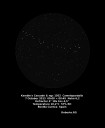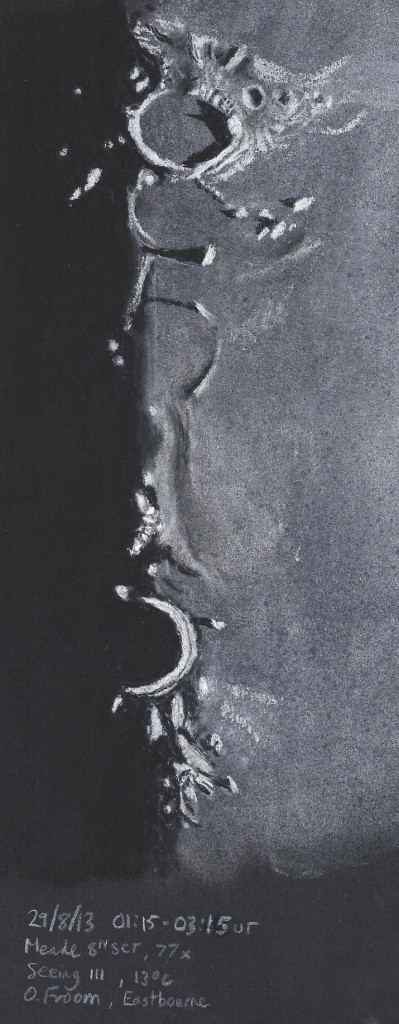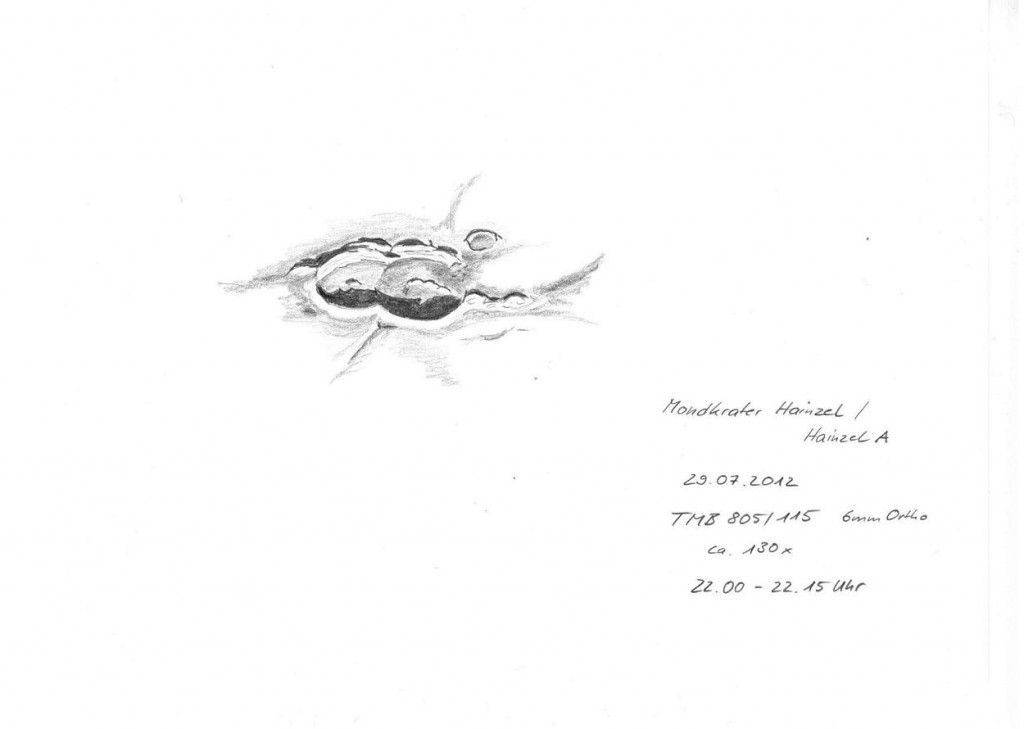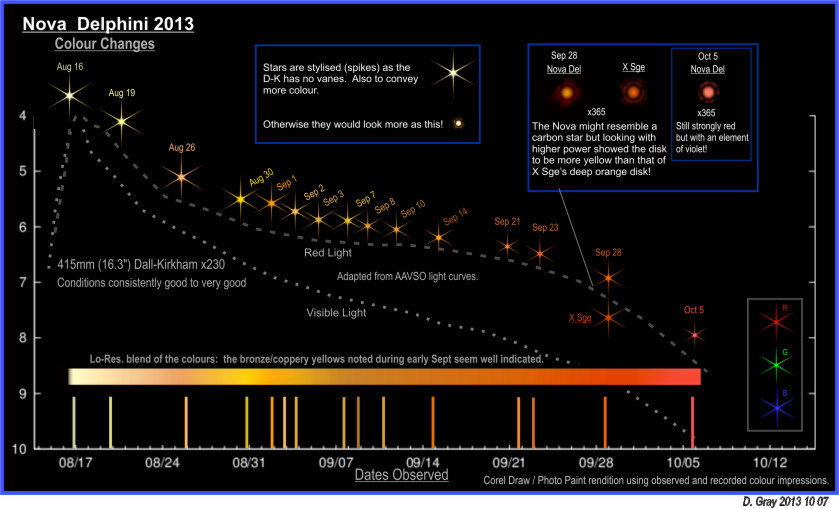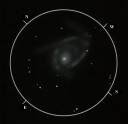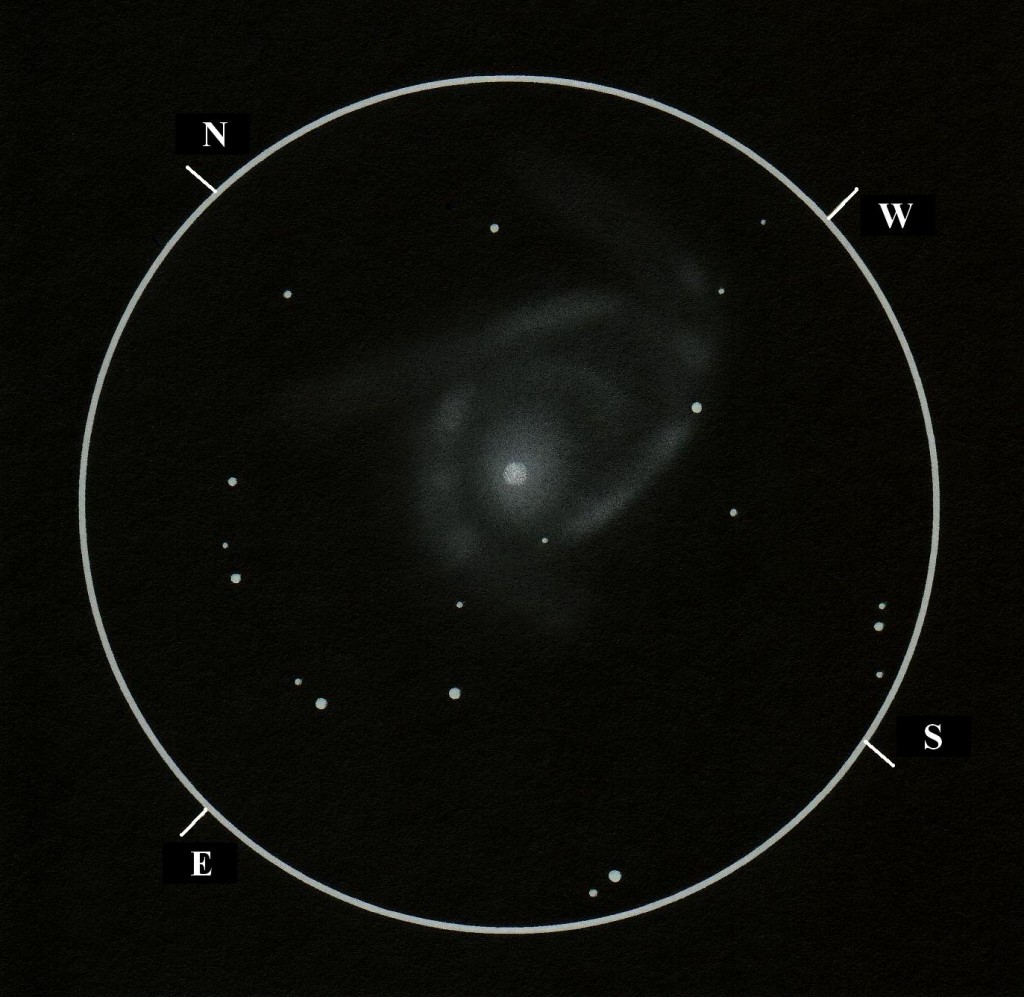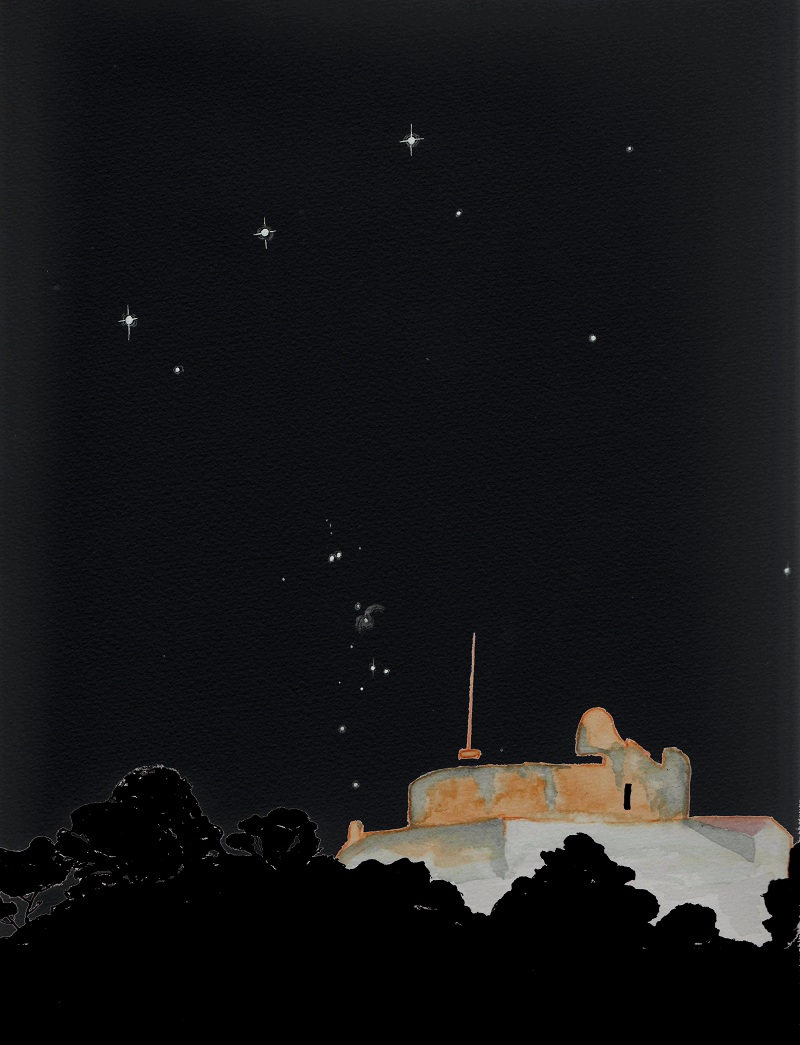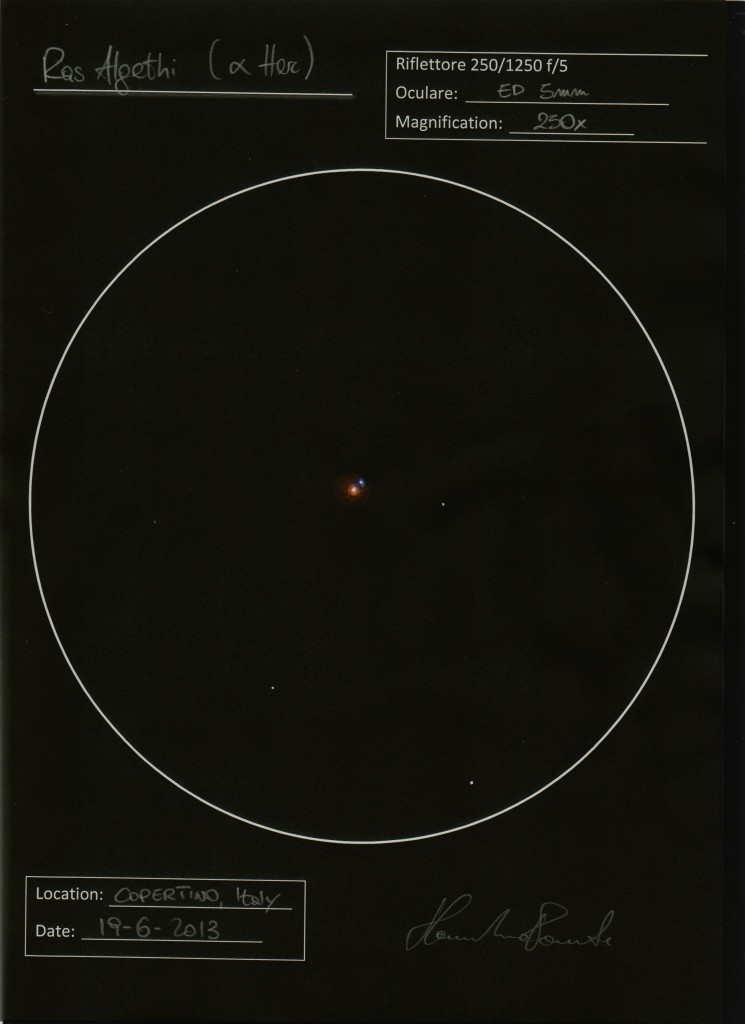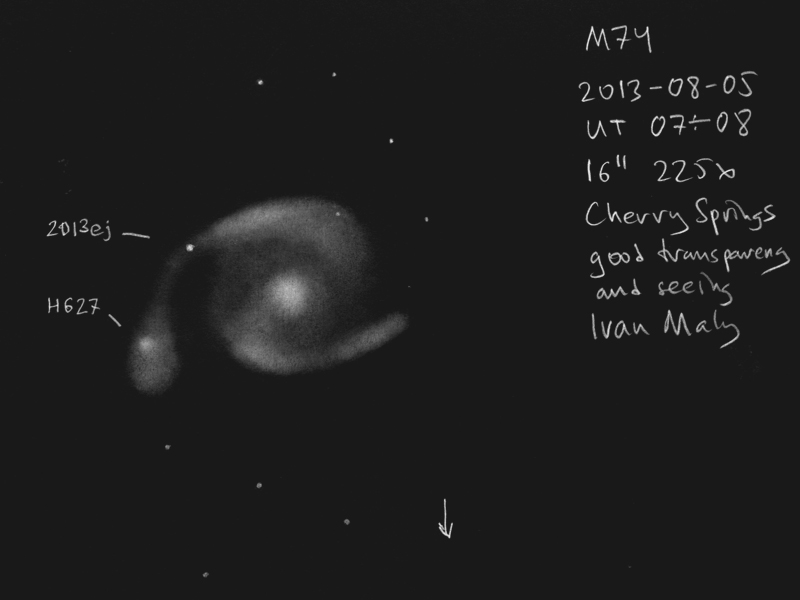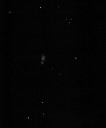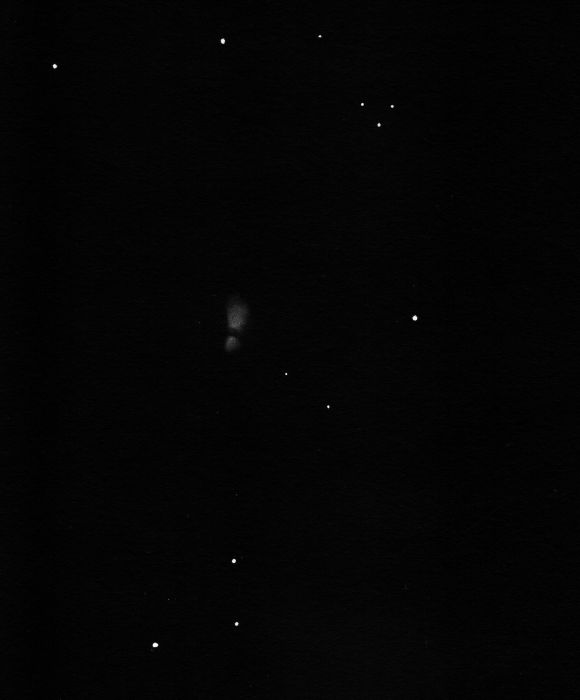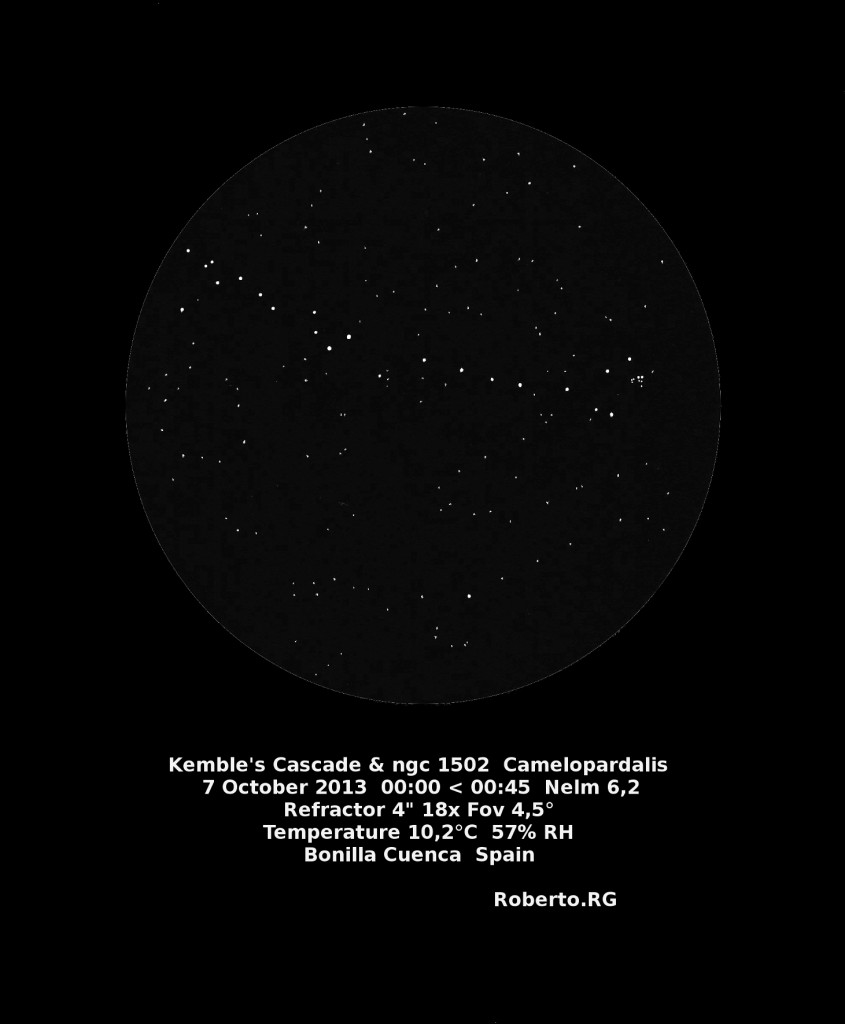
Hi ASOD, sending this observation of this magnificent object. It was the first time I could see this object and had to make the sketch. is a large area with a number of very luminous stars that end up in the open cluster NGC 1502 with its easy double star Struve 485 detectable at low power. This object will be of my favorite deep sky objects, I hope you can watch it and enjoy it as much as I do.
regards.
Object name: Kemble’s Cascade & NGC 1502 Camelopardalis
Object type: Asterism & Open cluster
Location: Bonilla Cuenca ( spain )
Date: 7 October 2013
Hour: 00:00 < 00:45
Media: graphite pencil, processed and inverted gimp 2.8
Optical equipment: Refractor Tele Vue 101 F / 5,4 Genesis SDF Eye piece ES 30mm
Magnification 18x True field 4,5°
Sky conditions: Stable sky, light wind. Nelm 6,2 Temperature 10,2°C Relative humidity 57% Borthle scale 3/9
